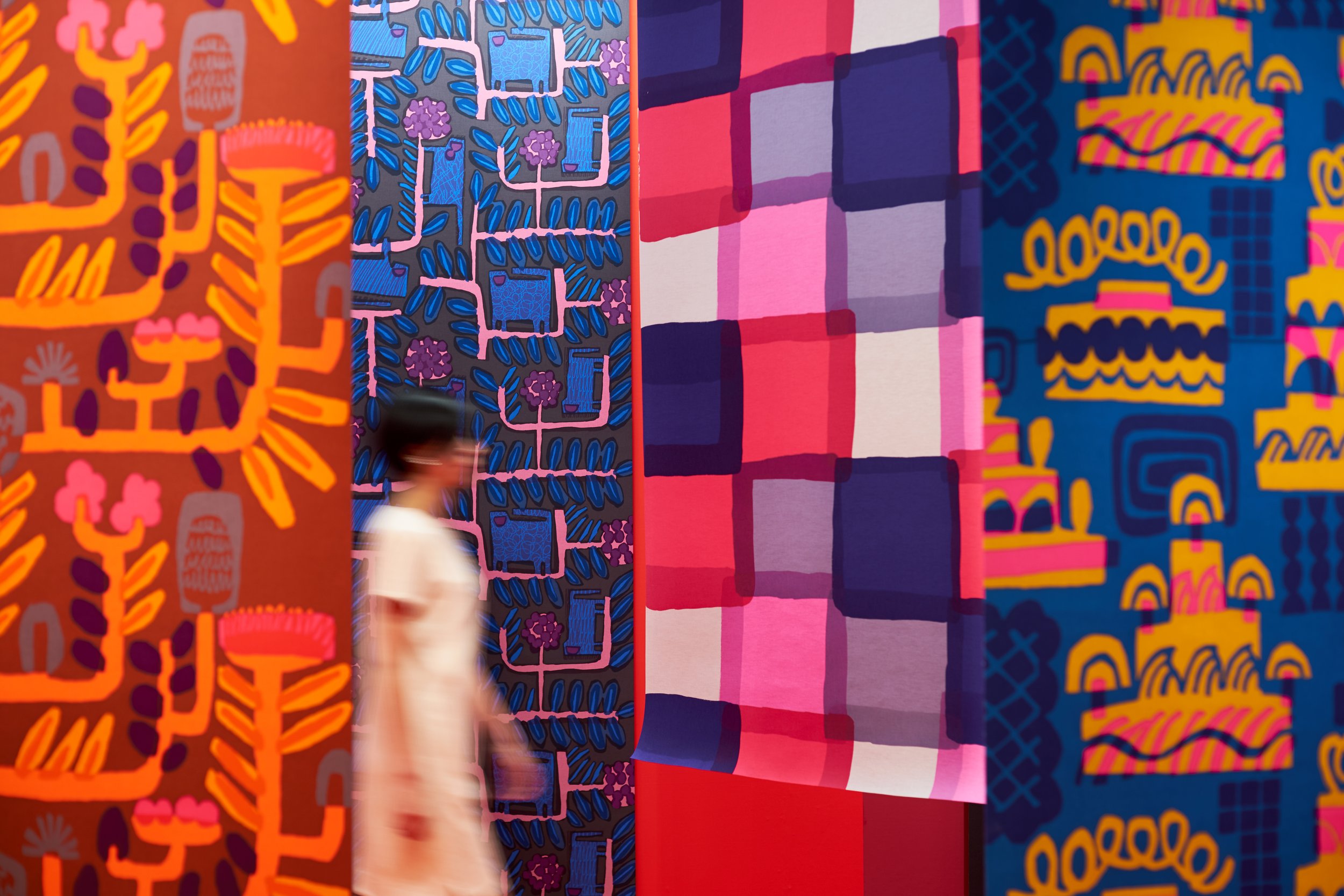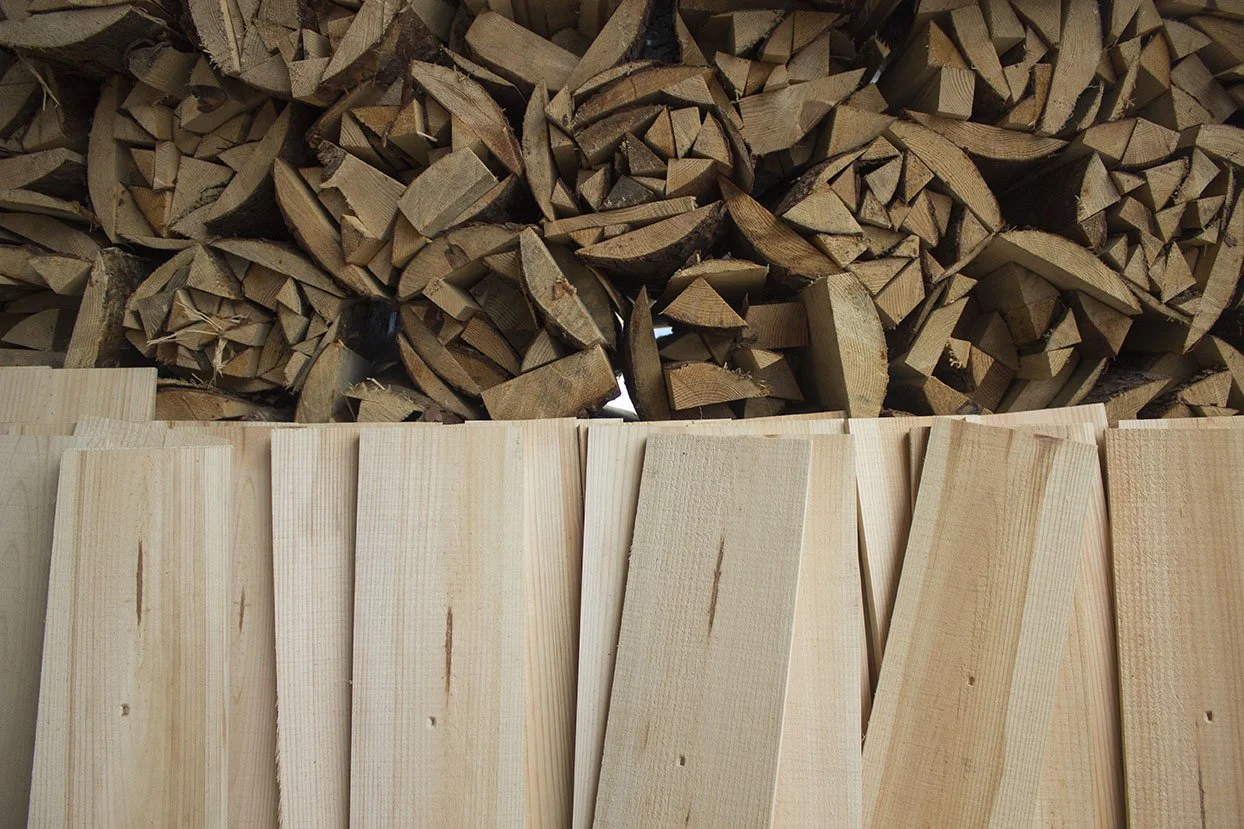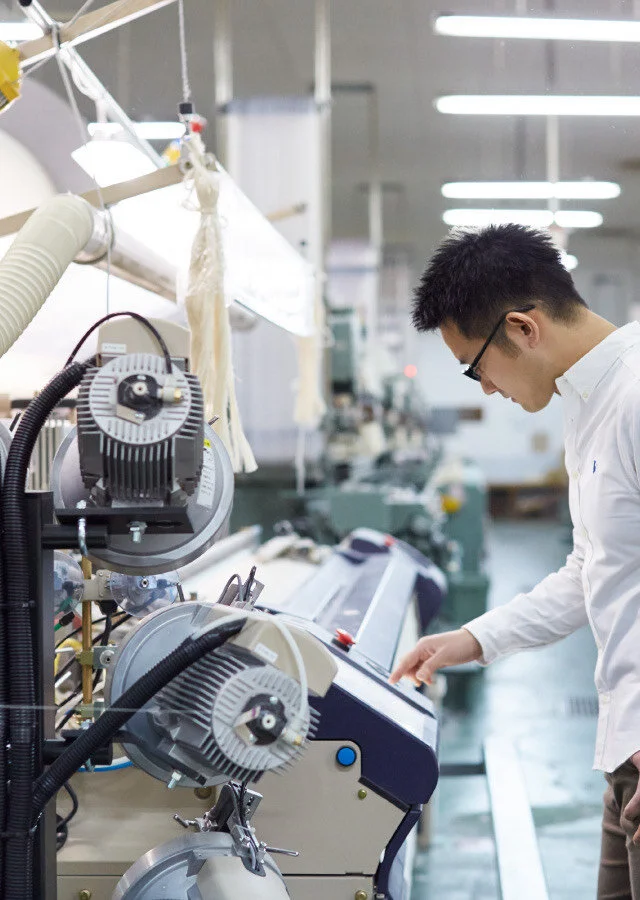Meet Masaru Suzuki, Icon of International Design
Though educated at Tama Art University in Tokyo, Masaru Suzuki built his reputation working with brands the world over, from Finnish design house Marimekko to apparel companies like South Korea's Socks Appeal and Japan's own Uniqlo. His bold designs and focus on natural forms set Suzuki's style apart from his contemporaries. Enjoy a glimpse inside the decisions and philosophy of one of Japan's premier designers in our interview with the man himself.
A 2017 exhibit of Masaru Suzuki’s designs at Art Gallery Artium in Fukuoka, Japan
What made you choose textiles as a medium?
When I decided to go to art college, I actually wanted to go into the field of graphics. It was a time when illustration was very popular, and I had a vague feeling that I wanted to do something like that. However, all of my applications to graphic design programs were rejected; fortunately, I was admitted to the textile department [at Tama Art University], which I had also applied to, so I decided to go there.
At first, I couldn't connect with the work, which was strongly related to craftsmanship, and I struggled to get used to it. One day, when I went to the library to look for materials for an assignment, I saw a photo of Marimekko’s work that was introduced in an overseas magazine. From there, I started to really get into textiles.
In your experience, are there any special benefits to portraying your designs in textile form, as opposed to another medium?
People are wrapped in textiles 10 seconds after they are born, and it is a material that is so close that it can be said that they never leave the skin for a moment. So when people look at the materials called textiles, I think they look with an emotion that is completely different from what other materials create.
I think that designing colors, patterns, textures, etc. for materials that can be said to have almost no distance from people has a special power to directly approach people's emotions.
Are there any difficulties unique to making textile-based art?
Textiles are not only close to people [in a literal sense], but they also have the quality of being closely related to human life more generally. Because of this, I feel that people tend to seek warmth and affinity with textiles rather than sharp or cool sensations. I often have difficulty developing textiles that express the sense of the times sought by designers.
A 2021 exhibit of Suzuki’s work at Gallery AaMo in Tokyo
Where do you find the inspiration for your distinctive style?
I'm not very conscious of what the motif is. I think it's very important to think about what kind of effect you want to create, so I think I often work on designs with an emphasis on that way of thinking.
In modern times, just by living a normal life, we are bombarded with a flood of information from various places and in various ways. I try to see, digest, interpret and output with my own eyes as much as possible.
What philosophy do you seek to embody with your art?
Colors and patterns may not be strictly essential, but they are very important because they directly affect people's feelings. Without them, people's emotions will be less active and life will be less energetic. I believe that colors and patterns are like vitamins that enrich and energize people's lives.
What feeling would you like to convey with your designs?
Plain, neutral items with no colors or patterns are easy to use and are accepted by everyone, but when choosing, we tend to choose according to the conditions. I want to create something that people who see it will think, "This is good," and pick it up with an active feeling.
Why did you choose animals as the focus for Ottaipnu?
I had a lot of ideas when I launched the brand, but I thought that if I didn't come up with something that was different from other brands, it would be buried. The world was already overflowing with geometric and floral patterns, and I thought it would be difficult to make them stand out, so I came up with animal patterns, which weren't very popular at the time.
Personally, I never kept animals, but I really liked the form and texture of the motifs, and when I was a student, I often went to zoos and sketched them.
The animal form has a familiarity, and I thought that it would play a role in conveying various things to the viewer as a motif.
How did you come to be involved in working abroad, with brands in places like Finland and South Korea?
“I believe that colors and patterns are like vitamins that enrich and energize people’s lives.”
As for Finland, I had a longing for Scandinavian printed fabrics when I was a student, and the first designer I studied was greatly influenced by Scandinavia, so I always wanted to work for a Scandinavian brand someday.
After I became independent, I had been working for a domestic interior fabric manufacturer for a long time, but I wanted to work with the brand that was my starting point, so I approached it myself. Although Scandinavian countries are Western countries, their lifestyles are similar to those in Japan.
The Korean manufacturer was approached through a Japanese agency. South Korea has the same Asian sensibility as us, but I feel that there is a strong desire for color and pattern design in a different way from Japan. I feel that my work caught my eye from such a place.
Do you have a favorite design from your own body of work?
The Ishikoro Bath Mat is a product that I have a very strong attachment to. I think I was still inexperienced as a designer when I created it, but because of my inexperience, I think I was able to come up with bold ideas and have a strong passion to make them come true.
I was blessed with the person in charge of the manufacturer, and although the trial production was difficult, I think that I was able to create a very fresh product that had never existed before.
The form of the stone is also a pattern design, and it has the effect of jogging the viewer's memory of actual stone textures. I wasn't conscious of it, but as a result, it has become a very Japanese product that has been highly evaluated not only in Japan but also overseas, and has been on sale for nearly 20 years.
Some answers lightly edited for clarity.
A textile design from Masaru Suzuki titled “Niji,” the Japanese term for “rainbow”













